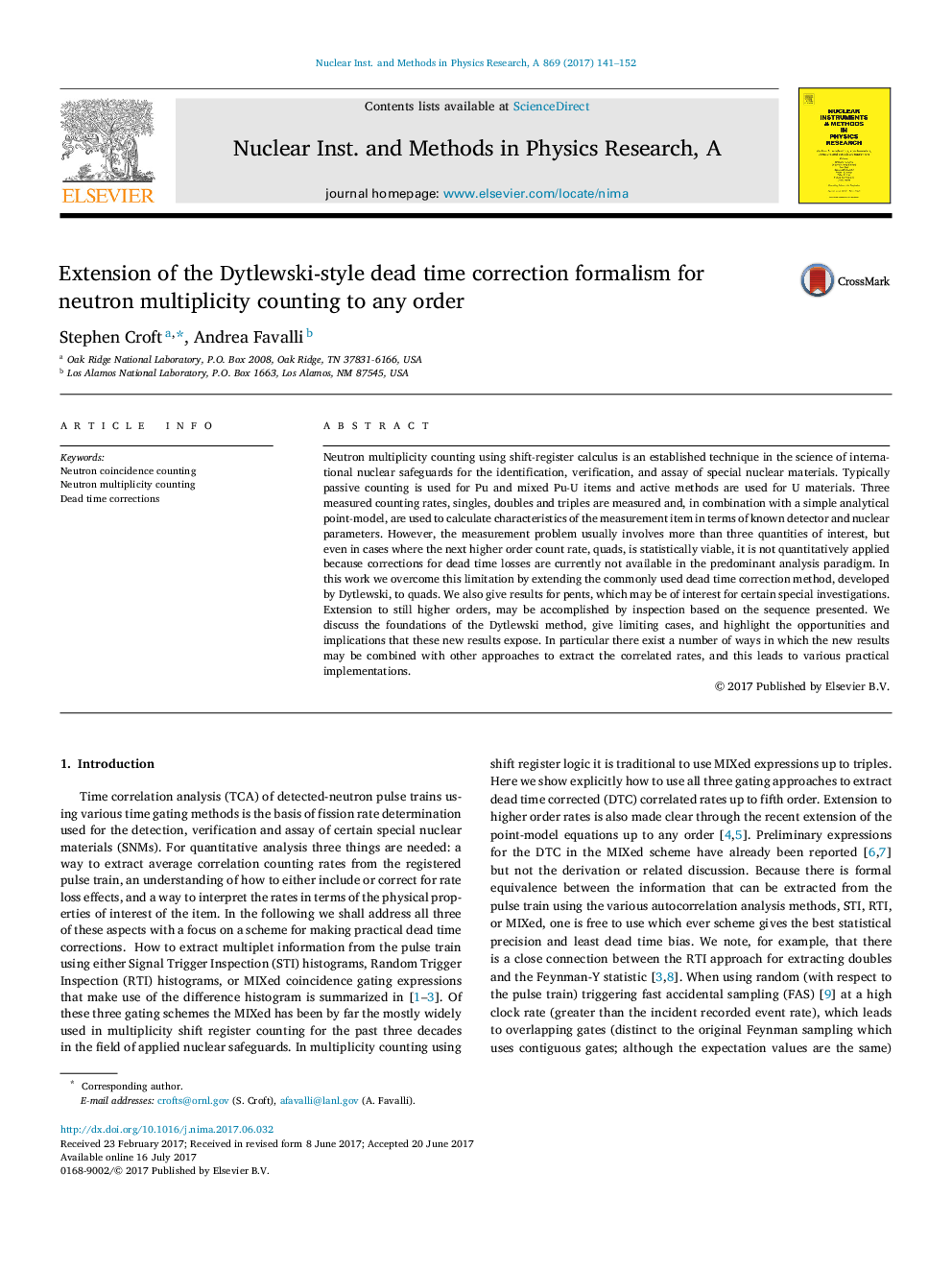| Article ID | Journal | Published Year | Pages | File Type |
|---|---|---|---|---|
| 5492641 | Nuclear Instruments and Methods in Physics Research Section A: Accelerators, Spectrometers, Detectors and Associated Equipment | 2017 | 12 Pages |
Abstract
Neutron multiplicity counting using shift-register calculus is an established technique in the science of international nuclear safeguards for the identification, verification, and assay of special nuclear materials. Typically passive counting is used for Pu and mixed Pu-U items and active methods are used for U materials. Three measured counting rates, singles, doubles and triples are measured and, in combination with a simple analytical point-model, are used to calculate characteristics of the measurement item in terms of known detector and nuclear parameters. However, the measurement problem usually involves more than three quantities of interest, but even in cases where the next higher order count rate, quads, is statistically viable, it is not quantitatively applied because corrections for dead time losses are currently not available in the predominant analysis paradigm. In this work we overcome this limitation by extending the commonly used dead time correction method, developed by Dytlewski, to quads. We also give results for pents, which may be of interest for certain special investigations. Extension to still higher orders, may be accomplished by inspection based on the sequence presented. We discuss the foundations of the Dytlewski method, give limiting cases, and highlight the opportunities and implications that these new results expose. In particular there exist a number of ways in which the new results may be combined with other approaches to extract the correlated rates, and this leads to various practical implementations.
Related Topics
Physical Sciences and Engineering
Physics and Astronomy
Instrumentation
Authors
Stephen Croft, Andrea Favalli,
